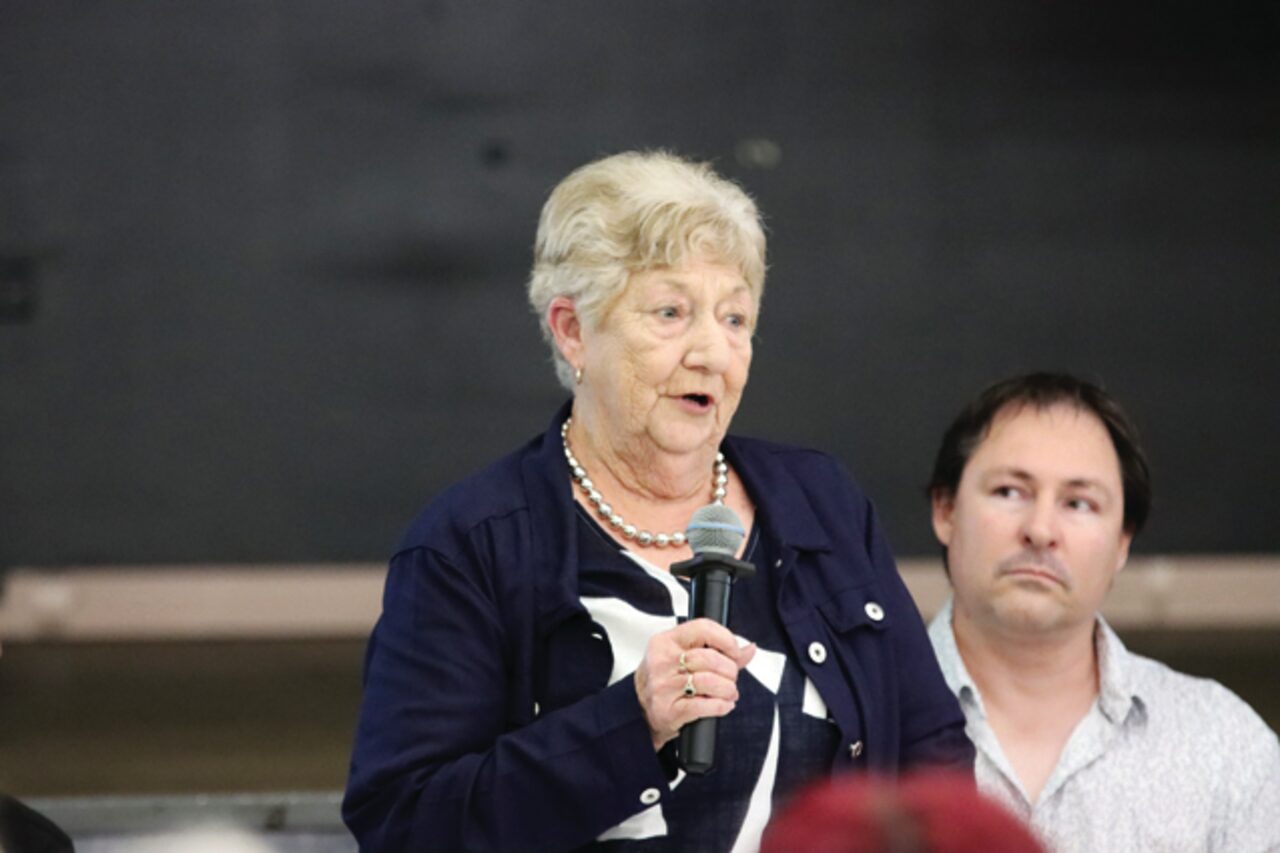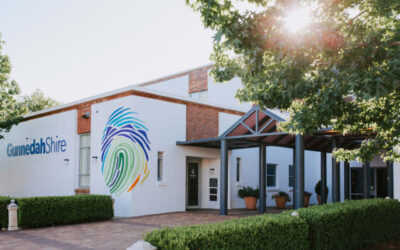Gunnedah’s councillor candidates have foreshadowed changes to the proposed special rate variation should they be elected this weekend.
The permanent 38.88 per cent SRV proposal led discussion at the ‘Meet the Candidates’ event hosted by Gunnedah Chamber of Commerce last week.
Ten of the 11 candidates attended the question-and-answer styled event.
Opinions were mixed about how to recover funding for Gunnedah’s cash-strapped council but many agreed the proposed rate increase is too high.
Several forum candidates also suggested the two-year timeline for the SRV roll out is too compressed.
Candidate Rob Hooke said “there is no easy answer” to the financial
pressure but the SRV’s implementation over two years would be an “absolute killer”.
“I’m leaning toward three, possibly four years,” Mr Hooke said.
Candidate Rob Hoddle told the audience he had lodged his own community submission to council about the SRV. He suggested the rate increase should be “10 per cent each year for three years”.
His written submission also proposed $1 million in additional cost-cutting measures for council.
Candidate Mitchum Neave said the SRV implementation should be stretched over four years and changed to a temporary measure only.
“Yes, we need to tighten our belts and move forward but I don’t want it locked in permanently,” Mr Neave said. “We all want that relief.”
Candidate Linda Newell said the 38 per cent increase is “way too high” and would be “really hard for people to manage”.
She suggested the community should prioritise what it’s willing to forgo to achieve a lower SRV.
“We need to look at what we don’t need to do right now,” Ms Newell said.
Candidate Kate McGrath was “reluctant” to cut services to local assets such as the pool, art gallery or aged and community care services provider, Go-Co.
“The liveability of the town is just as important as how much we pay (to use it),” Ms McGrath said.
Candidate Greg Petersen was another eager to keep services and assets maintained.
“I would hate to see something like the pool cut,” Mr Petersen said.
He suggested more pressure should be directed to state and federal governments as councils and communities are “being squeezed” of funds and resources.
Candidate Colleen Fuller said she was “never in favour of the SRV” but would prefer a 3-4 year implementation period if it had to be delivered.
She was also “dead set against 24 per cent” SRV increase that is being proposed for the first year (2024/25).
Candidate Cameron Moore said services should remain but did not believe “taxing” the community was the way forward.
Candidate Tammey McAllan said the SRV proposal was too little, too late for the Gunnedah community.
“Maybe this should have been talked about five years ago,” she said.
Another pre-submitted question also asked candidates what they saw as the main factor behind Gunnedah’s growth in the last decade and how should it be protected for future generations.
Candidate Ann Luke said youth should be encouraged to live their lives while young, then return to their home town with skills to support the community.
“I want youth to go and see the world but come back,” she said. “I don’t mind them going but I want their (Gunnedah) experience to be so good they want to come back.”
Another question asked candidates if they would seek the mayorship on election and would they be willing to work as a team with other councillors for Gunnedah and not as part of any large political party.
Candidate Hooke was the only representative to indicate he would be standing for mayor if elected.
“Yes I am going to put my hand up,” he said, referencing his eight years on council, six as deputy mayor, as his qualification for his intention to nominate.
Candidates Fuller and Luke both deferred their decision and said it depended on who is elected, while candidate Hoddle also reserved his decision.
“You never say never in politics … who knows,” Mr Hoddle said.
Candidate Neave, who is also indigenous, said Gunnedah has “never had an Aboriginal mayor and it would be a great legacy” but said he would not be nominating.
Among those attending the ‘Meet the Candidates’ event was farmer and former mayor, John Lyle.
He was against the 38.88 per cent SRV “as it stands” and agreed with the sentiments of several candidates who suggested changes.
Mr Lyle said some degree of compromise is necessary if the SRV proposal is to win over farmers.
“There is a terrific undertone against (the SRV), particularly in the agriculture sector,” Mr Lyle said.
“Agriculture and business need to be looked at – mining will come and go but agriculture will always be there.”
He suggested council should host another town hall community meeting, to brief residents on any amendments, before it formally applies for the rate increase.
Given council’s $3.1 million operating deficit, Mr Lyle said council should also cancel the koala park project and consolidate its funds.
“The costs of running it will be enormous,” he said.
Mr Lyle, who was mayor of Gunnedah Municipal Council from 1987-95, also thought council should be focusing more efforts on efficiency gains.
Question on development charges
One of the questions at Gunnedah’s “Meet the Candidates’ forum centred on development applications and costs imposed by council.
The question by Gunnedah business owner Glenn Many and read: “As our larger neighbour Tamworth forges ahead with new commercial and industrial parks filling quickly, Gunnedah’s business development is hindered by complicated DA approval processes and turnaround times and hefty council contributions. For context, the cost of a development in Gunnedah being $200,000 to Tamworth’s $27,000 for the same size development. Councilors receive reports and recommendations from council staff that are often complicated and hard to understand. Would you commit to educating yourself regarding our town planning issues so you understand these reports, and so can make informed decisions on our behalf that ensure Gunnedah’s economic development continues?”
Candidate Rob Hooke said Tamworth could afford to have reduced charges because of its “much bigger rate base”.
The deputy mayor also said Tamworth had adopted a process of “cross-subsidy” where ratepayers contribute more to help reduce developer fees.
Also going against council was “very understaffed” planning department which meant development applications were not being processed in adequate time.
Mr Many was still not confident the councillor candidates would carry out their own research on the DA process and not just trust the recommendation of council staff.
He also rejected Gunnedah Shire Council’s suggestion the reason for lower developer charges in Tamworth was due to a cross-subsidy.
From what he understands, Tamworth’s cross subsidy is only to reduce developer charges in the “small town and villages” with no mention about susidising commercial or industrial developments.
If anything, Mr Many believes commercial and industrial are paying more to subside residential rates in the villages.













